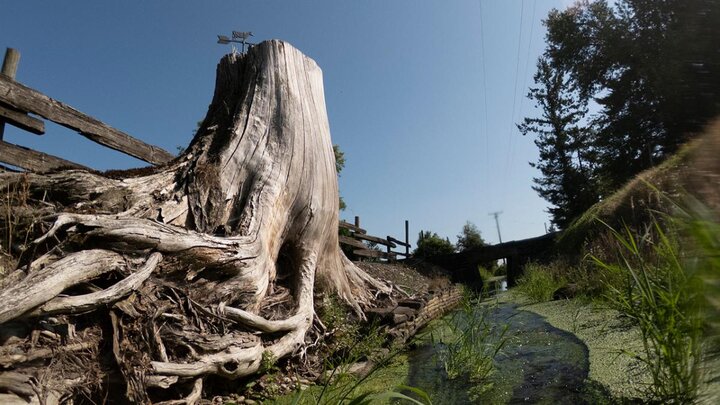Within the last few years there has been a lot of talk about carbon sequestration and carbon markets, particularly in the agriculture sector. Well carbon sequestration is actually one of a larger set of ecosystem goods or services that can be provided or generated in agriculture. Ecosystem goods and services, often shortened to ecosystem services (ES), simply are the benefits that humans receive from nature. These benefits support many aspects of human well-being, including our food and water, security, health and economy. One commonly used framework describes ecosystem services as provisioning (food and fresh water), regulating (water purification), cultural (recreation and aesthetics), and supporting (soil formation) services. Ecosystem services are often divided into intermediate and final ecosystem services. Final ecosystem services are the benefits that we directly consume, enjoy, or use, while intermediate ecosystem services lead to the final service. For instance, bass fishing would be a final good or service, with the water quality providing the fish habitat is an intermediate service. The difference between intermediate and final services is important when assigning economic value.
How are Ecosystem Services Measured and Valued?
Economists use a number of different types of values, including both market and non-market values, when estimating how much an ecosystem service is worth. Valuation may include assigning a market or dollar value to a particular ecosystem or component, but it also includes many non-marketable values such as improvements in public health outcomes, societal preferences, and intrinsic or existence value. Physically measuring ecosystem services is difficult; determining their values is even more complex. Though scientists and economists have developed innovative ways of measuring, modeling, and valuing ecosystem services, much remains unknown, in part due to the complex nature and dynamic interactions of natural or environmental processes.
Complicating efforts to value ecosystem services is that the beneficiaries of a service are not necessarily near where the service is being produced. For example, if producers implement land management practices that improve water quality, resulting in clean drinking water, the water may be produced in one place but consumed many miles downstream. Differences or long delays in the timing of action and effect on the ecosystem service also complicate matters. Consider afforestation or tree-planting by landowners: this action stores and sequesters carbon, results in less carbon dioxide being released into the atmosphere, and ultimately helps maintain a more stable climate. All humans benefit from a stable climate, but those who live in areas susceptible to climate extremes, or those who rely on climate vulnerable resources for sustenance, likely experience the benefits more acutely. And these climate benefits may take years to become apparent.
Examples of Markets for Ecosystem Services in the U.S.
The Food, Conservation, and Energy Act of 2008 (2008 Farm Bill) directed USDA to facilitate the participation of American farmers, ranchers, and forest landowners in environmental markets. Current active and pilot markets exist for greenhouse gases (carbon), water quality, water quantity, wetlands, and habitats. Previous articles in this series presented information on carbon sequestration and carbon markets, particularly in agricultural systems, so I’ll focus on the example of water quality.
One effort supporting markets for water quality is the National Network on Water Quality Trading. This group consists of various organizations from across the country representing agriculture, wastewater utilities, environmental groups, regulatory agencies, and others working to deliver water quality trading programs. Despite cost-efficiencies from this market-based approach to achieving water quality goals, few successful examples exist. This group identified an action plan in 2018-2019 to help get water quality trading on the ground in more watersheds across the United States. Action items from their report included: simplifying water quality trading program design and application; ensuring state regulatory agencies (state and Federal) have adequate capacity and resources to engage on water quality trading; address real and perceived risks for buyers and sellers, including risks of litigation. As agriculture, through changes in or adoption of nutrient management and soil management practices or systems, can contribute significantly to these programs, it is critical agricultural producers and industry groups be involved with developing these programs.
Nebraska has been at the forefront of the conversation and efforts to form criteria under which water quality markets can be established and expanded, including hosting a national workshop on this topic in 2015, with U.S.D.A. and U.S.E.P.A., among others. Nebraska agriculture, its producers and landowners, could benefit financially from more widespread implementation of water quality markets or other markets for ecosystem services. And all residents of the state could benefit from more, diverse ecosystem services being provided in our state from our agricultural producers.




